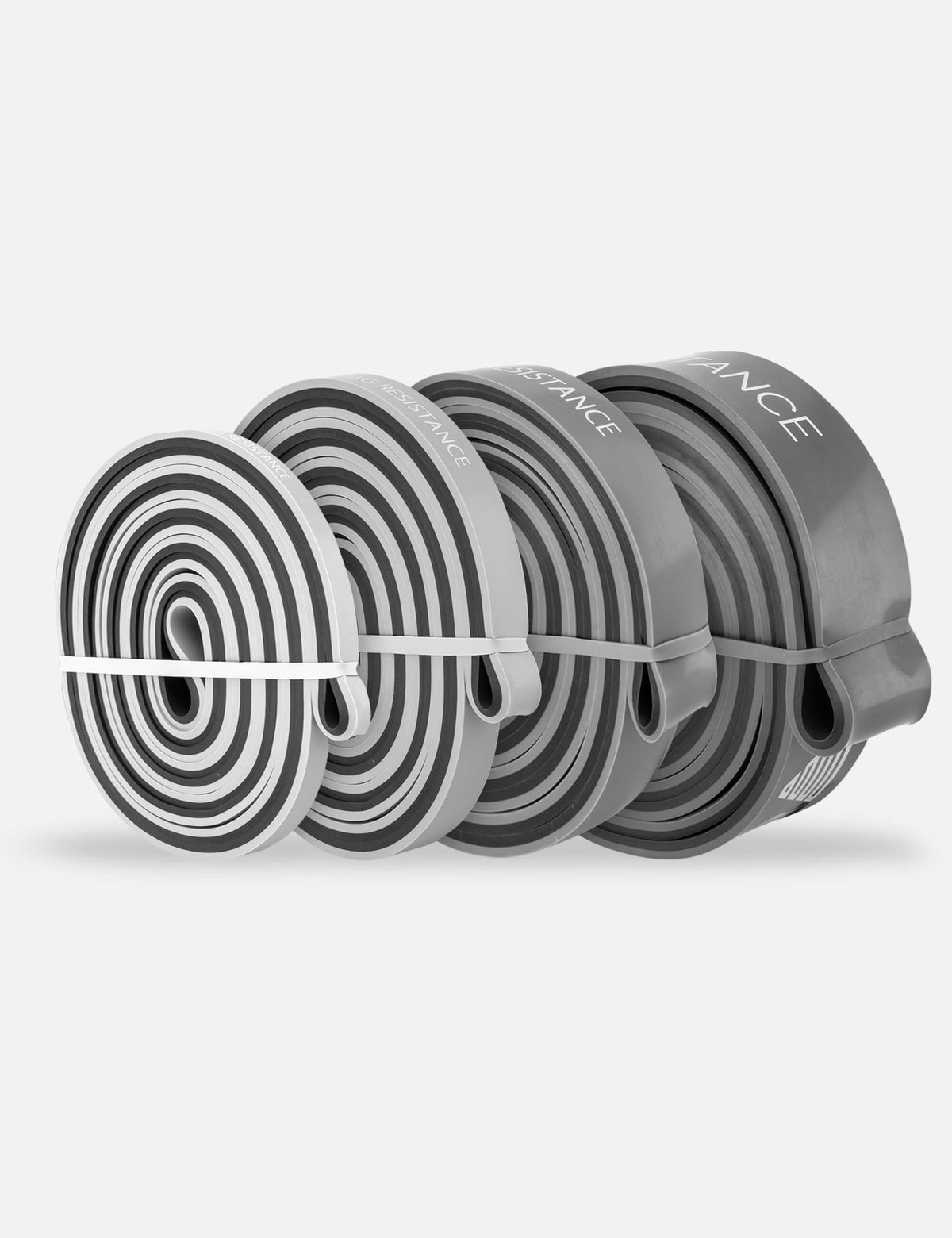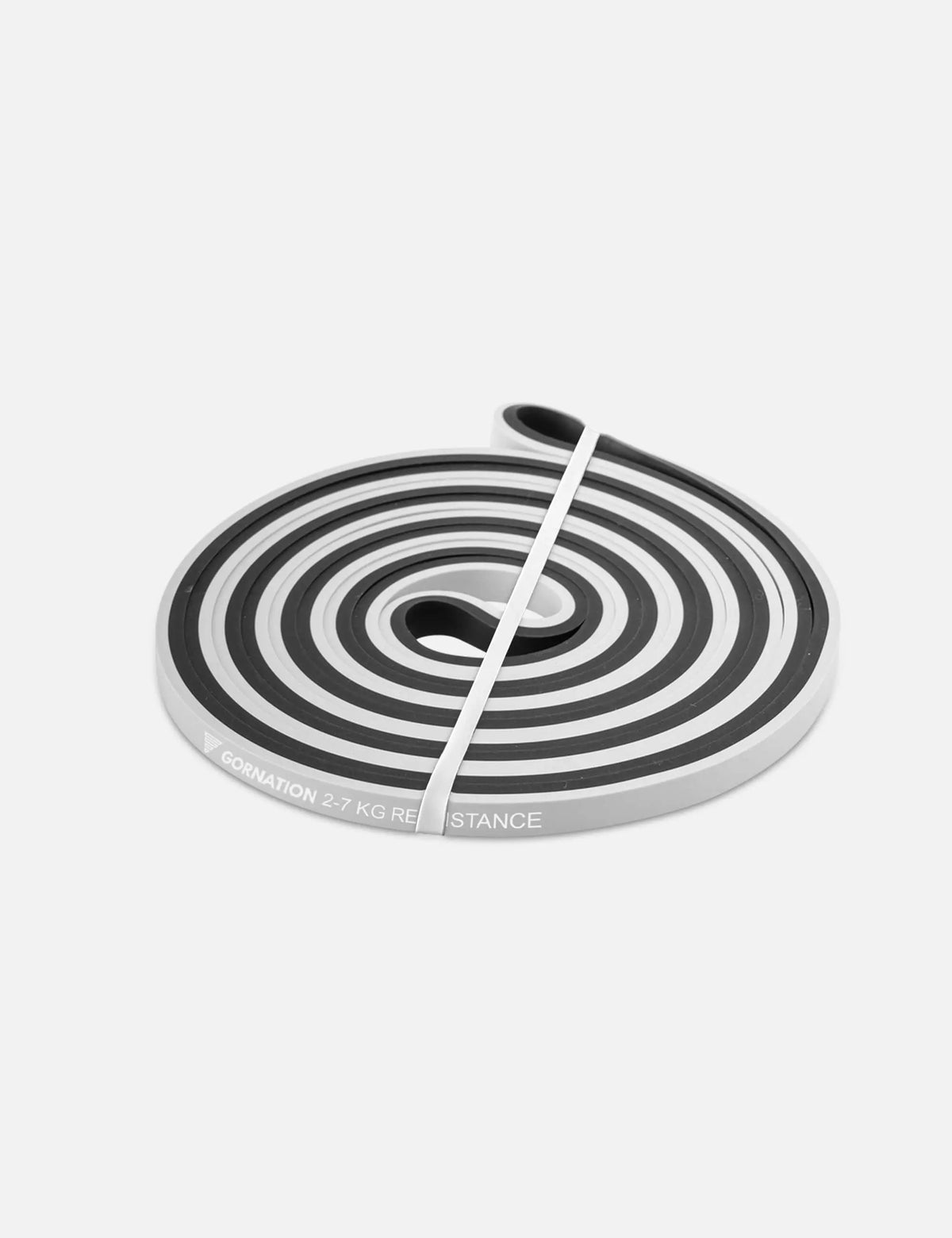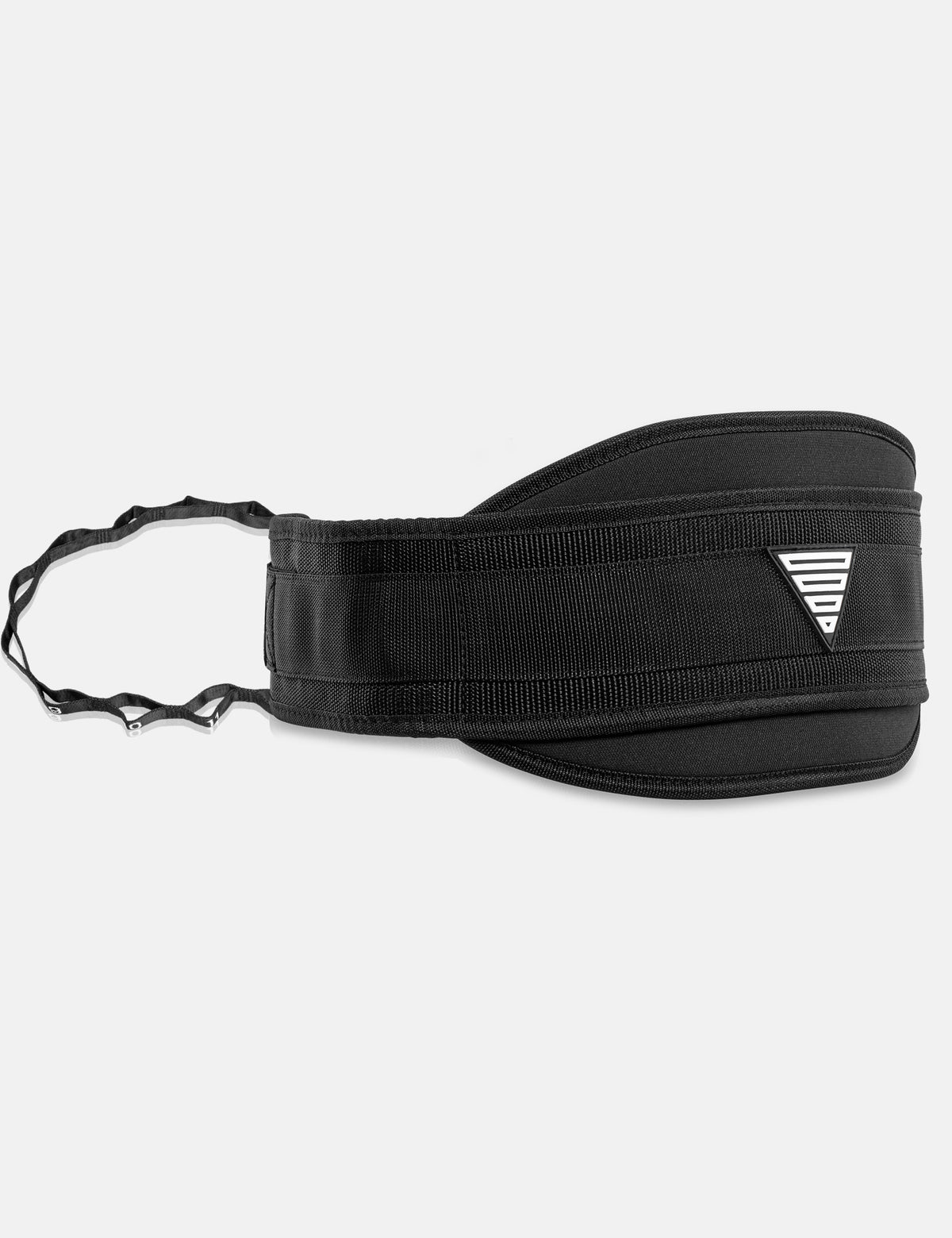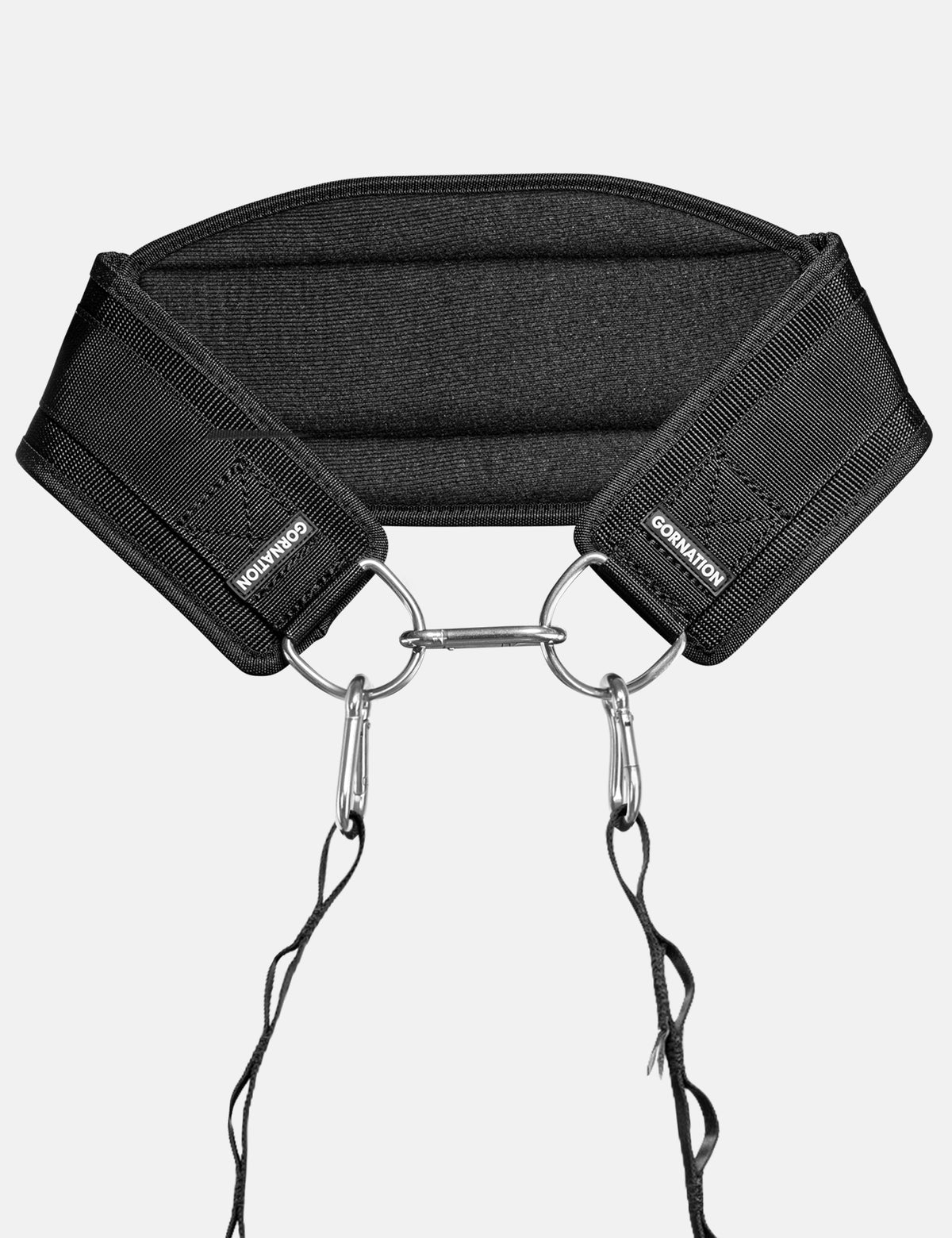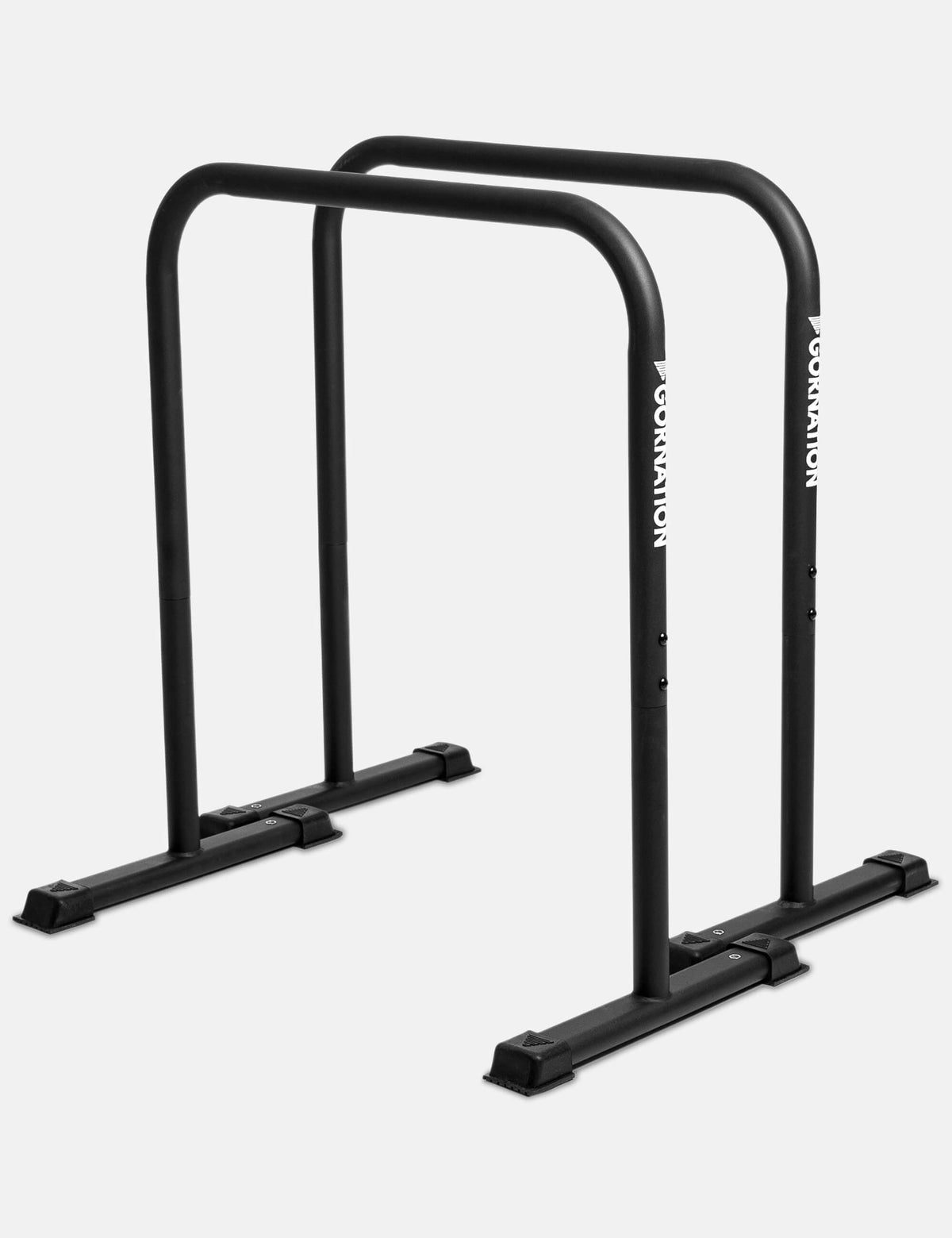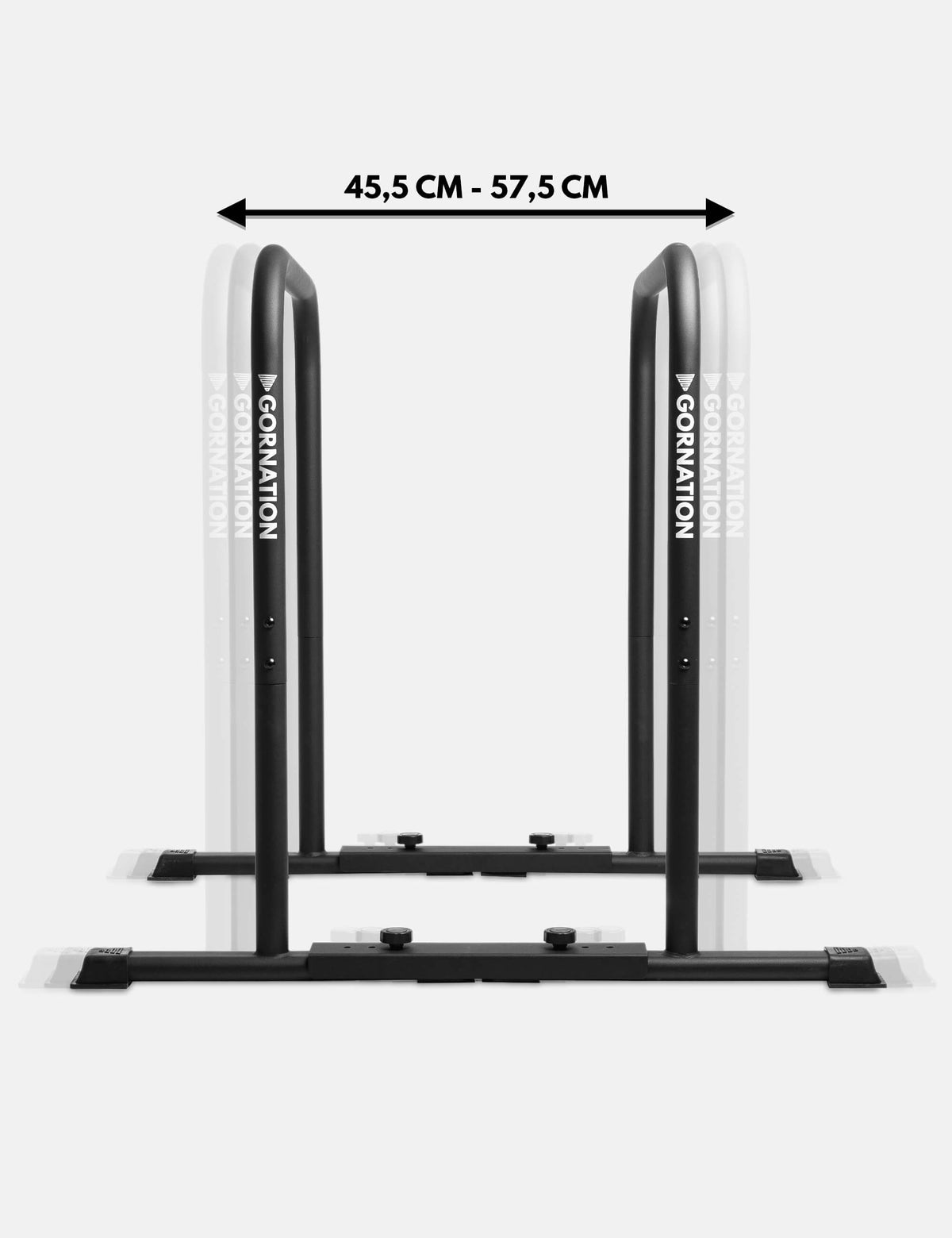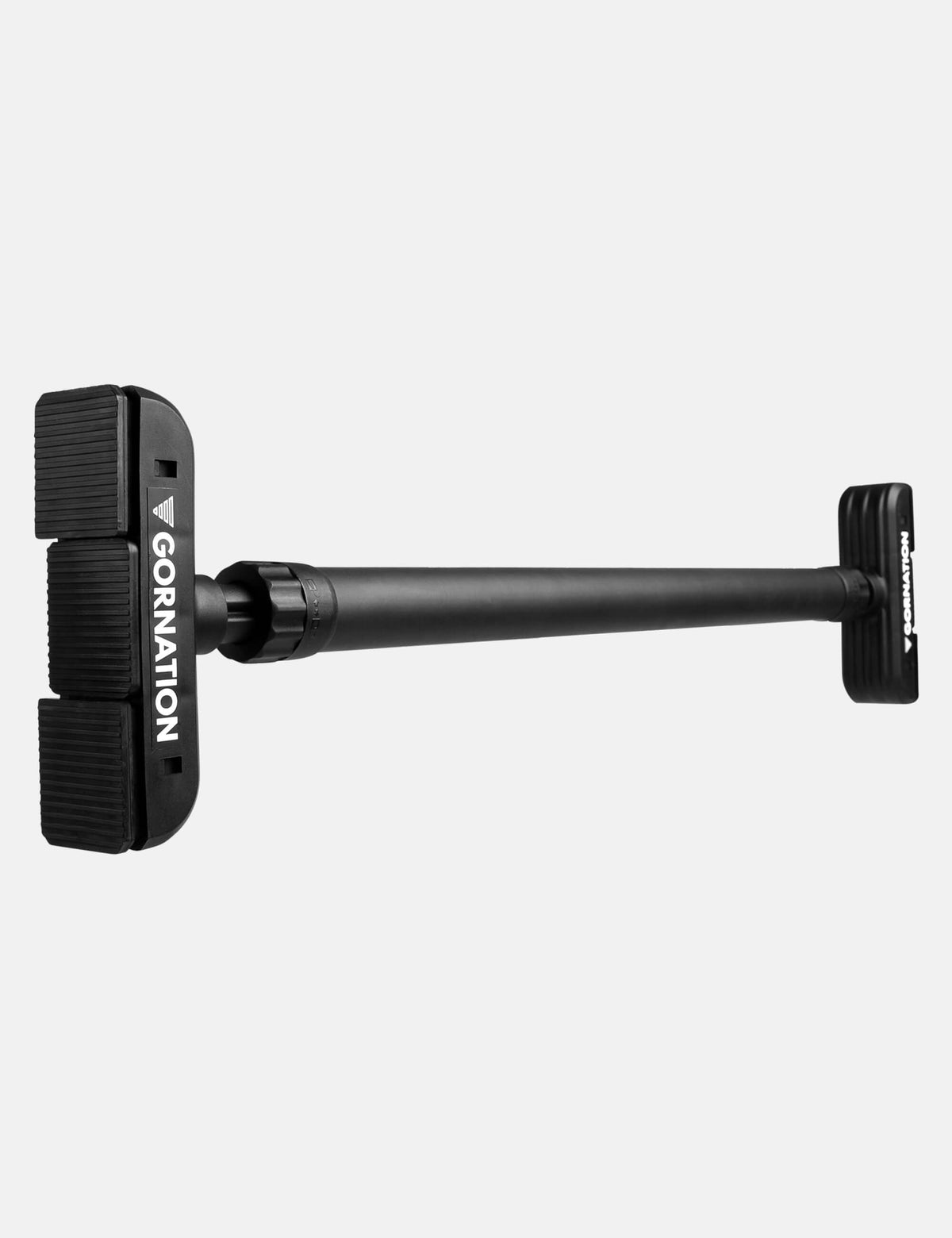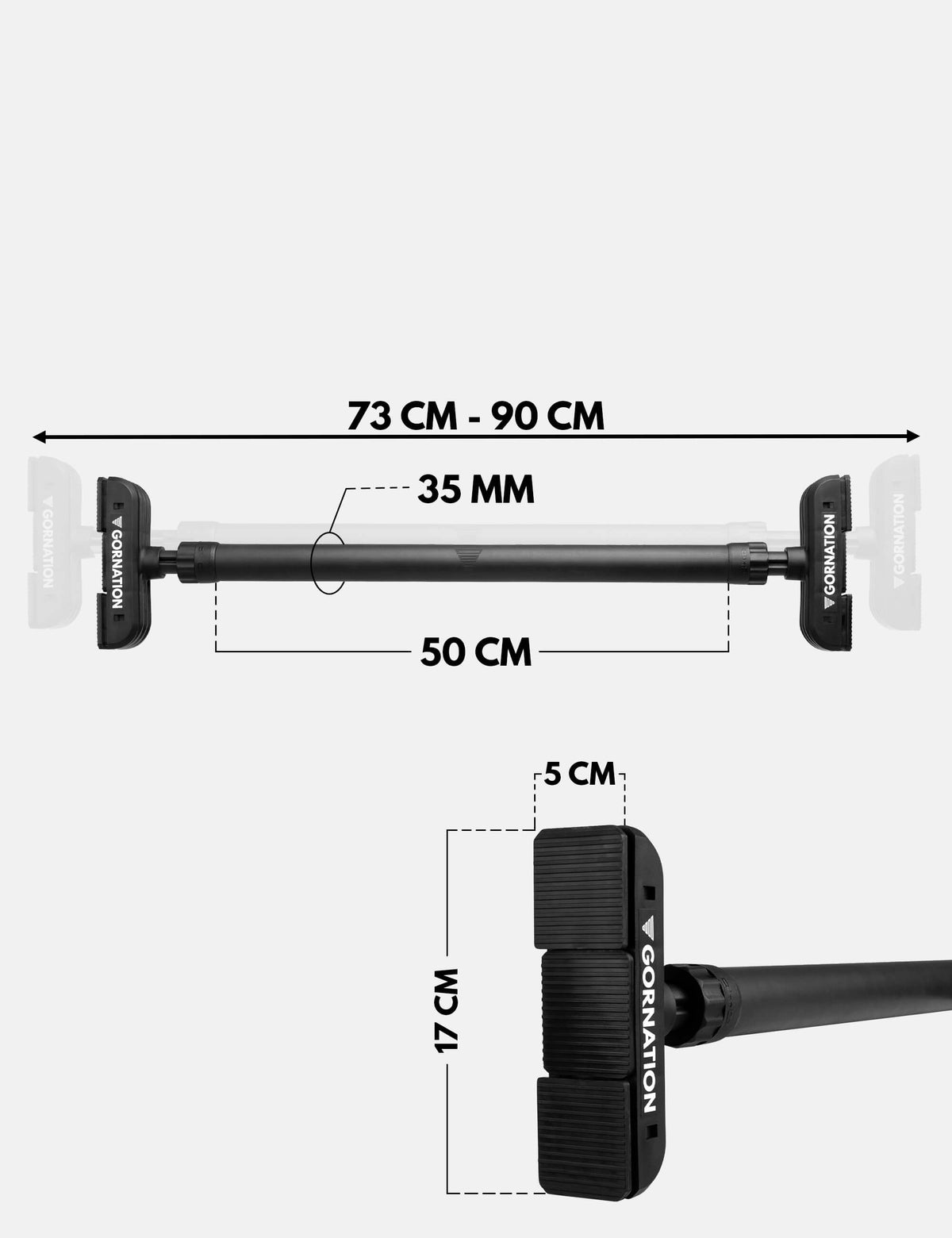How to do the exercise
The Assisted Pull Up (Neutral Grip) is the perfect progression if regular pull ups are still too difficult. It helps you build the pulling strength, improve technique, and get closer to your first clean pull up. Here’s how to perform the Assisted Pull Up correctly:
1. Starting Position
Set yourself up on parallel bars or handles about shoulder-width apart. Grip the bars in a neutral position (palms facing each other). Place your feet or knees on a resistance band for assistance. Keep your chest up, core tight, and shoulders pulled back.
2. Pulling Phase
Engage your back and arms to pull yourself upward. Keep your elbows close to your body and pull until your chin is above the bars. Avoid swinging or jerking movements.
3. Controlled Lowering
Slowly lower your body back down in a controlled motion until your arms are fully extended. The eccentric phase is just as important as the pulling – it builds strength and control.
4. Reset and Repeat
At the bottom, reset your body tension and repeat for the desired number of reps. Over time, reduce band assistance to progress toward unassisted pull ups.
Recommended Equipment for Assisted Pull Ups
Benefits of the exercise
The Assisted Pull Up (Neutral Grip) is ideal for developing the pulling strength and technique required for full pull ups:
-
Builds back, biceps, and grip strength with reduced resistance
-
Trains the correct pull up motion in a controlled way
-
Improves shoulder stability and core engagement
-
Allows safe progression toward bodyweight and weighted pull ups
This makes it a great stepping stone for beginners working toward their first pull up and for advanced athletes improving endurance and form.
Main muscles used
The Assisted Pull Up mainly targets:
-
Latissimus dorsi (lats)
-
Biceps
-
Forearms & Grip
-
Core muscles (for body stabilization)
By practicing the full pull up motion with assistance, you activate the key pulling muscles evenly and build balanced upper body strength.
If you're looking for other pull up exercises, check out our Youtube video:
Mistakes to avoid
Common mistakes when performing the Assisted Pull Up include:
-
Using too much assistance: Choosing a band that makes the exercise too easy slows progress. Pick one that challenges you.
-
Poor range of motion: Not pulling high enough or lowering fully reduces training effect. Aim for chin above bars and arms fully extended.
-
Swinging body: Maintain core tension to prevent momentum from doing the work.
-
Incorrect grip: Keep a neutral grip and avoid letting wrists collapse inward.
-
Rushing the lowering phase: Control the descent to maximize strength gains.
-
Looking down: Keep gaze forward to maintain alignment and posture.
Progress by reducing assistance step by step and focusing on clean, controlled repetitions.
Discover more Exercises
Looking for more ways to level up your training? Check out our full exercise overview or try these effective exercises that perfectly complement your training:
Please read our legal disclaimer before starting your workout.
 | 5.000+ Reviews
| 5.000+ Reviews
 Free EU Shipping above 100€*
Free EU Shipping above 100€*
 Worldwide Tracked Shipping
Worldwide Tracked Shipping






